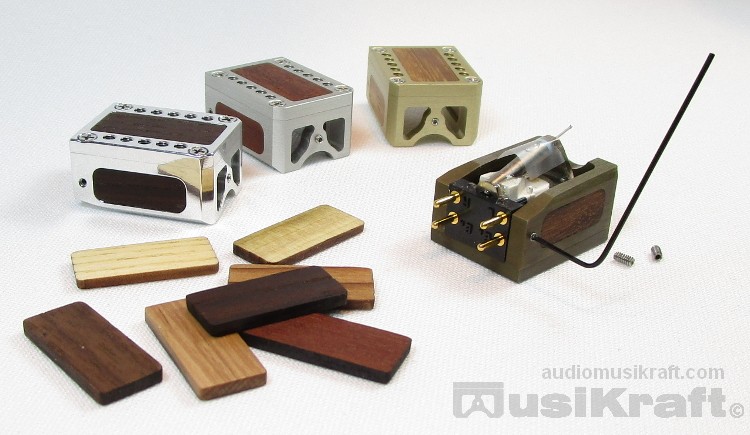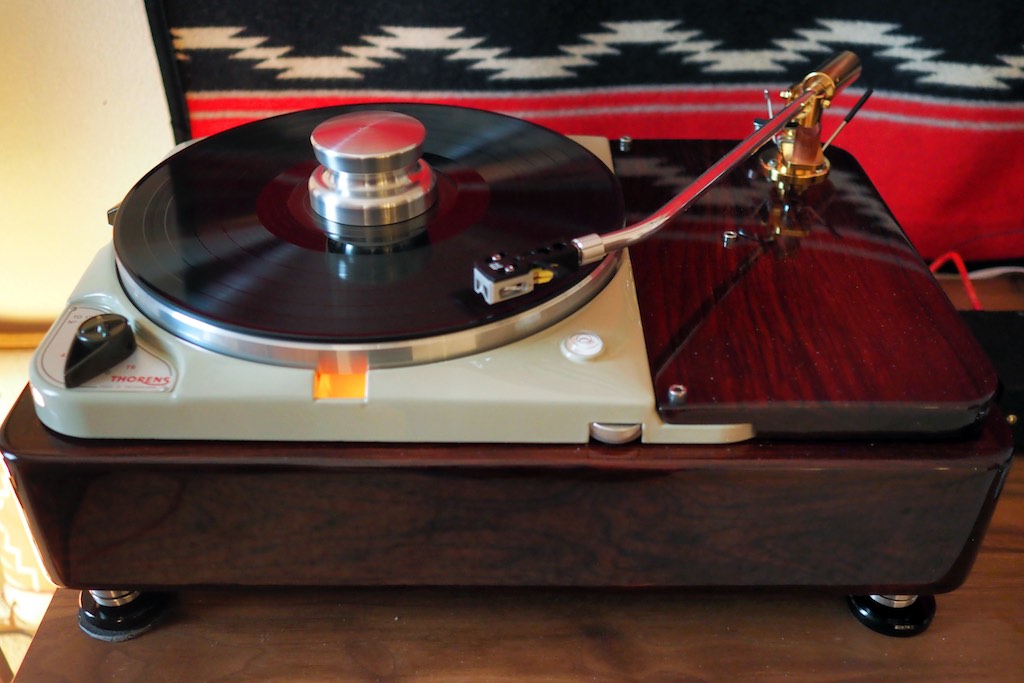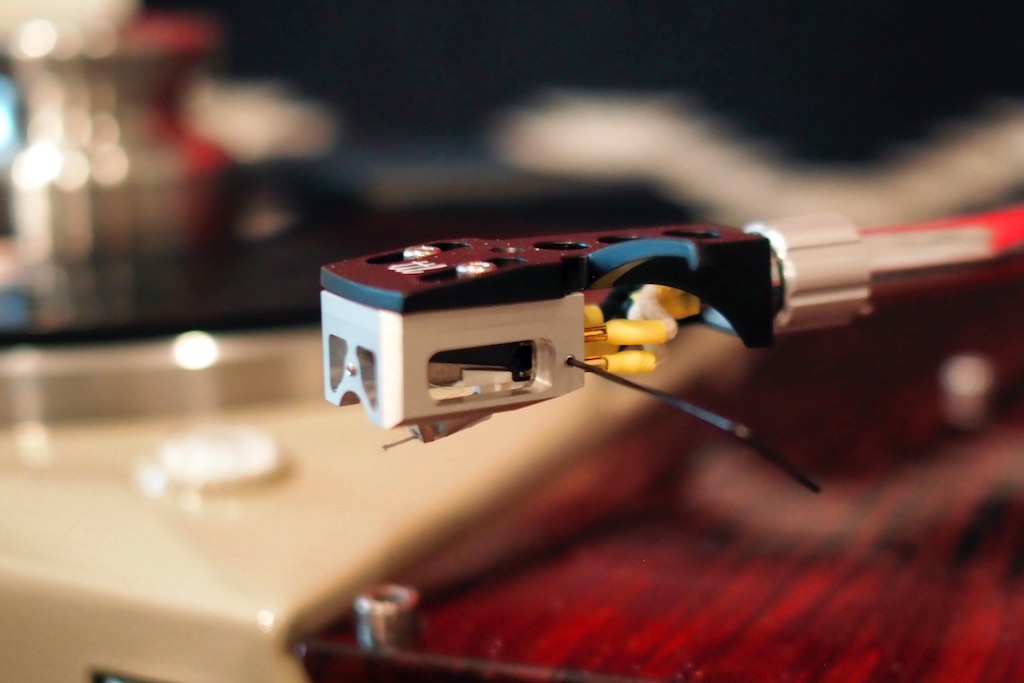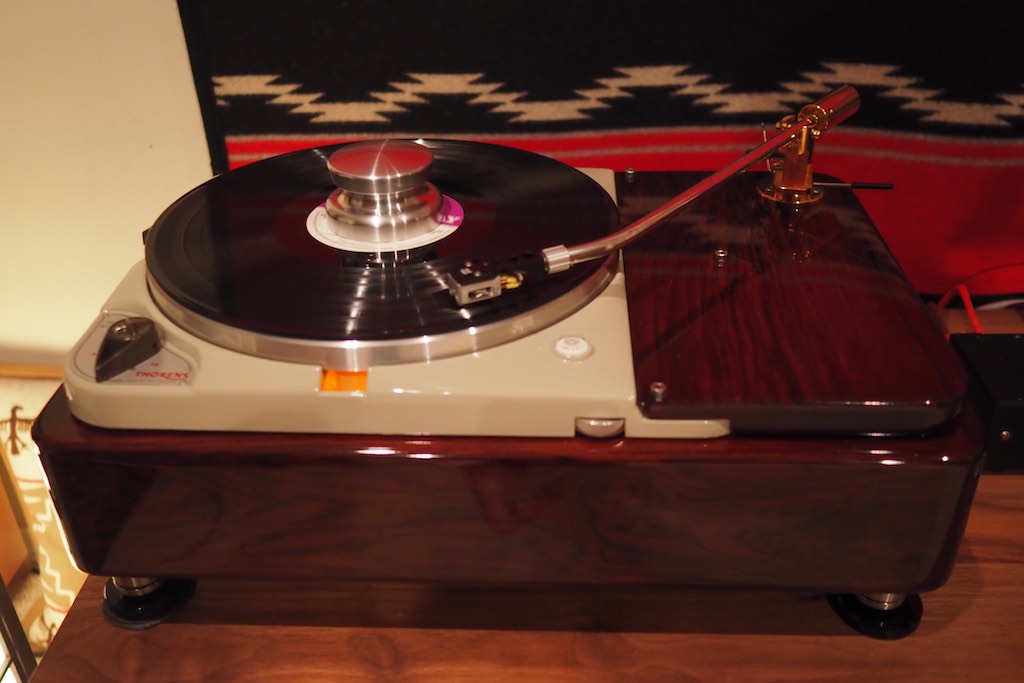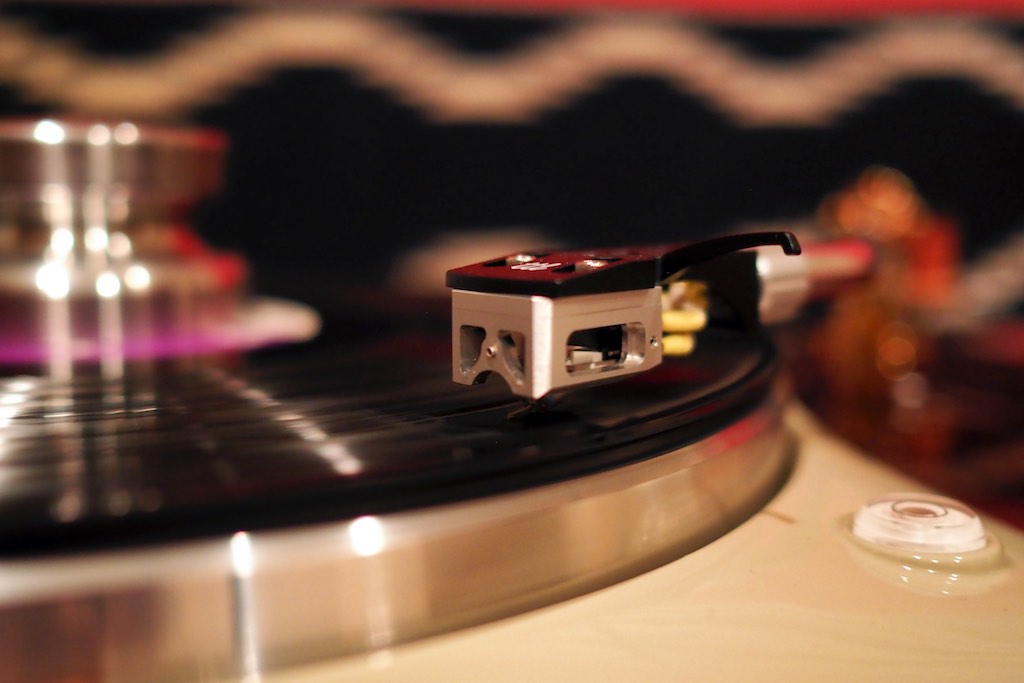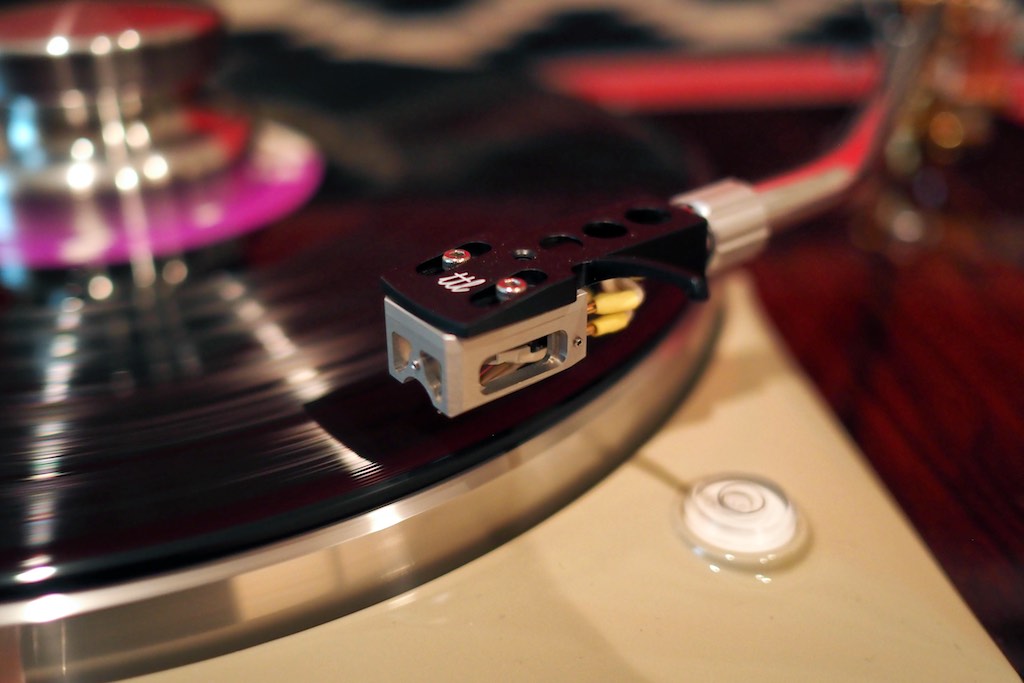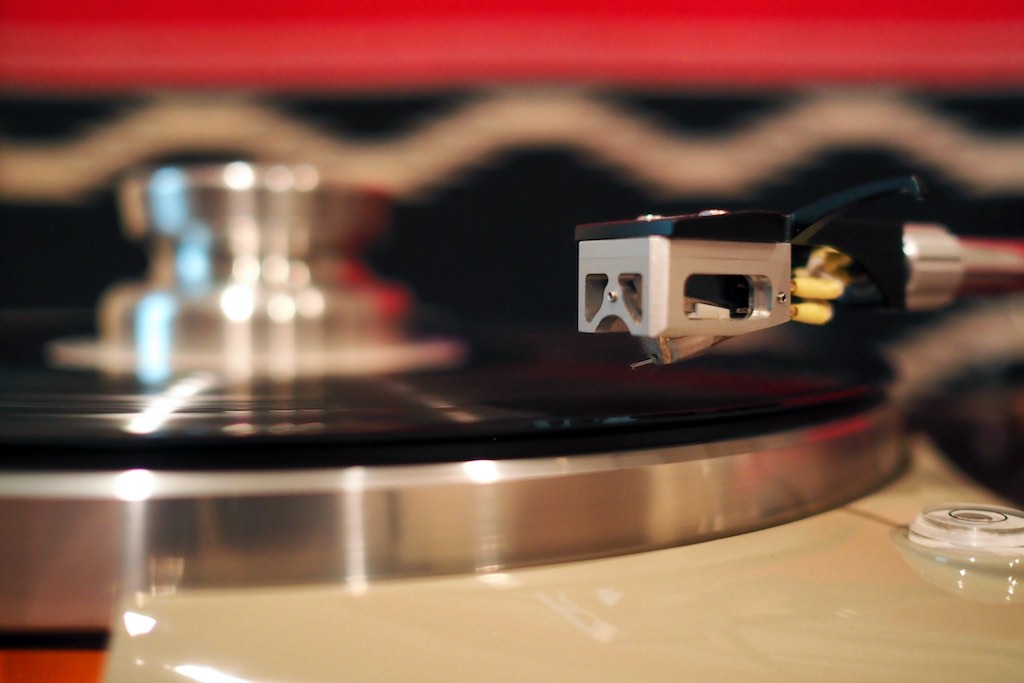Sometimes the best laid plans just don't pan out the way you think they will.
Last weekend I had fully intended to do a little experimenting with the micro-tuning screws of the Audio MusiKraft Denon DL-103 phonograph cartridge.
Between the need to tear down turntables, get them put back together and adjusted, as well as having an enjoyable afternoon listening session with buddies Pete and George, I just ran out of time.
So I'm now back at it.
Let me recap a little from my last post so you'll have the relevant background for this post about adjusting the fine-tuning screws of the Audio MusiKraft Denon DL-103 phonograph cartridge.
Guy Pelletier's Torquing the MusiKraft's Shell Fine-Tuning Micro Setscrews Video
Guy has a very helpful instructional YouTube video titled Torquing the MusiKraft's Shell Fine-Tuning Micro Setscrews, which I watched before trying to adjust the micro-tuning screws myself, to make sure I completely understood how to proceed.
Let me mention a few of the salient points from Guy's instructional video.
Firstly, when an Audio MusiKraft Denon DL-103 cartridge is shipped to its new owner the micro-tuning screws are not engaged, which gives the new owner a listening baseline to start from that reflects only the improvement wrought by CNC'd Audio MusiKraft cartridge shell.
This is how I've listened to the Audio MusiKraft Denon DL-103 since its arrival, and it is very apparent that replacing the Denon DL-103's stock plastic cartridge shell with the Audio MusiKraft CNC'd aluminum cartridge shell makes for a very significant difference in the Denon's performance.
Truly, if the Audio MusiKraft Denon DL-103 aluminum cartridge shell wasn't tunable at all, it would still be an easy recommendation for the big improvement it brings musically & sonically to the classic Denon DL-103 over the stock plastic cartridge shell.
Secondly, Guy says the Audio MusiKraft cartridge shell's rear tuning screws' threads limit the range of motion of the tuning screws in order to protect the cartridge's internals from damage due overzealous tightening.
The rear tuning screws allow for up to a quarter turn of adjustment.
Thirdly, Guy describes adjustment of the front tuning screw that contacts the pole piece of the Denon DL-103, which can be done while the cartridge is installed on the tonearm.
In the video Guy demonstrates lightly screwing in the front tuning screw until it contacts the pole piece.
Once the tuning screw lightly contacts the pole piece, Guy recommends no more than an additional eighth turn of the tuning screw, which puts quite a lot of tension on the pole piece.
Guy suggests very tiny careful adjustments to the front tuning screw up to its eighth turn maximum to adjust the sound, as very small adjustments make a dramatic difference to the cartridge's sound.
Finally, Guy emphasizes that the tuning screws are not there to hold the Denon DL-103 in place in the aluminum cartridge shell, rather their only purpose is to allow the listener to fine tune the sound of the Audio MusiKraft Denon DL-103.
That's a summary of the major points in Guy's video, but I encourage you to watch the video a few times to make sure you understand how it all works before attempting to adjust your own Audio MusiKraft Denon DL-103.
¸¸.•*¨*•♫♪¸¸.•*¨*•♫♪¸¸.•*¨*•♫♪
For my first tune I wanted to experiment with the Audio MusiKraft cartridge shell's rear tuning screws, which allow for up to a quarter turn of adjustment.
I'm going to do a little listening with the cartridge without the rear tuning screws engaged, then I'm going to do some listening with various levels of tensioning.

Audio MusiKraft tunable Denon DL-103. You can see the right-side micro-tuning screw at the rear of the cartridge shell.
First up for a listen is the Gillian Welch and David Rawlings LP The Harrow & The Harvest (Acony).
¸¸.•*¨*•♫♪¸¸.•*¨*•♫♪¸¸.•*¨*•♫♪
Initially I was cautious adjusting the rear tuning screws, as I wanted to get a feel for where the screws just contact the cartridge. Once I felt like I understood the first contact position, then I applied a quarter turn of tensioning, per Guy's instructions.
My first-tune listening impression with the cartridge shell's rear tuning screws engaged for "Dark Turn of Mind" was that the musical & sonic differences the rear tuning screws made when engaged were not nearly as large in magnitude as going from the stock Denon DL-103 to the Denon DL-103 encased within the Audio MusiKraft aluminum cartridge shell.
The difference in sonics & musicality when going from the stock Denon DL-103 to the Audio MusiKraft Denon DL-103 were big, and they were easily audible improvements both sonically & musically.
I found the rear tuning screws to have a more subtle effect than the new cartridge shell as I experimented with listening to them when engaged or not engaged, and it took me a little while to understand exactly what I was hearing.
So what did I hear when the rear tuning screws were engaged? With the rear tuning screws engaged it sounded like distortion was reduced, which made the natural tone of the instruments become more "real" and obvious, more direct, and it was easier to hear the individual harmony and overtones aspects of the music that contributed to the larger musical fabric.
The music & sonics sounded a little less resonant, a little less spacious, and a touch damped down, with the tuning screws engaged.
On first listen I thought information had gone missing with the rear tuning screws engaged, but then it dawned on me that I was actually hearing more musical information, and what I thought was additional resonant qualities and spaciousness were actually distortions that were subtly blurring musical information, resulting in a loss of nuance in the music.
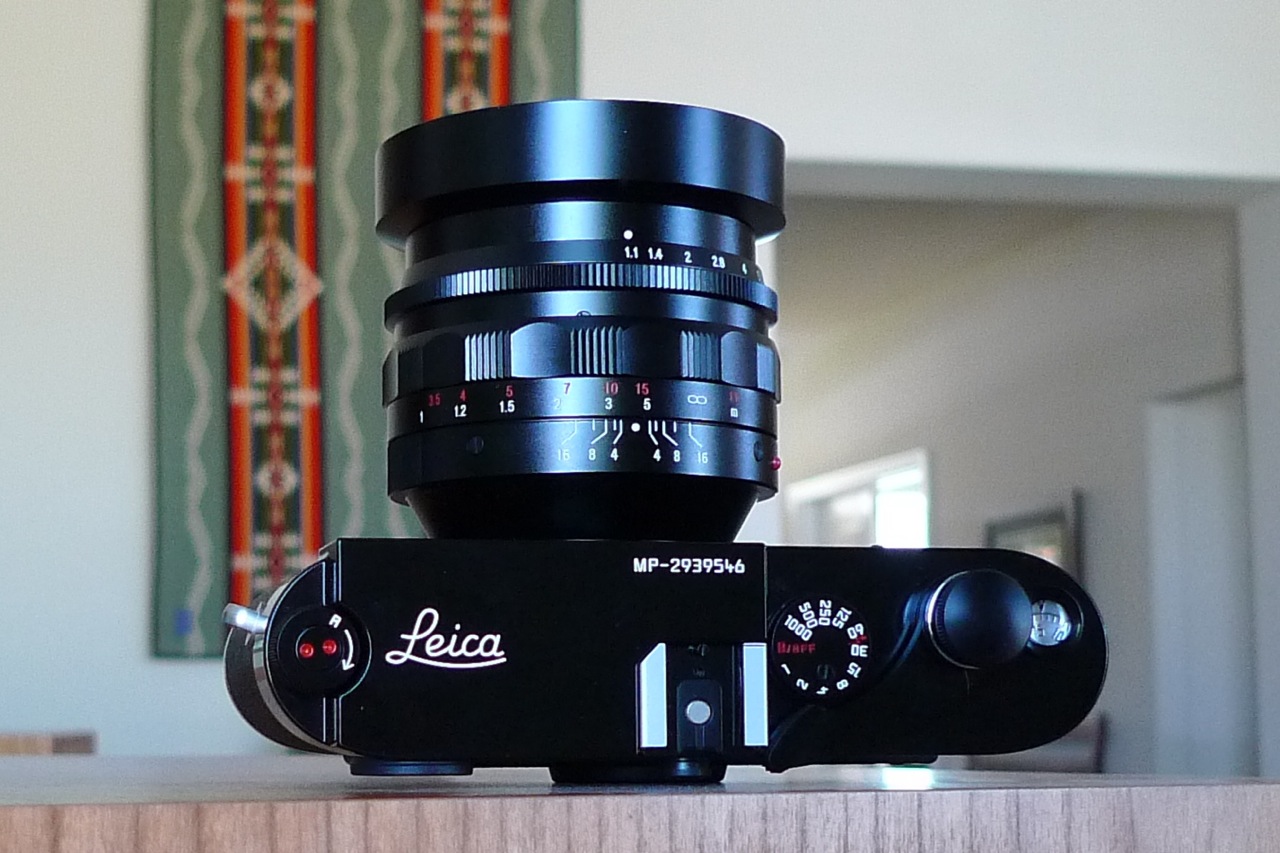
My old film Leica MP with a fast Voigtlander Nokton 1.1 50mm lens. It's long gone now, and I miss it!
Here's an analogy for my fellow camera enthusiasts: When the rear tuning screws are engaged the effects on the sonics & music are like when you're using a fast lens that puts the subject in perfect focus while everything else recedes into a dreamy bokeh that enhances the visual experience. However, with a really fast lens like the 1.1 above, the range of focus is very narrow, so if your focal point isn't perfectly adjusted the subject can look a little fuzzy and unresolved.
That's sort of what's going on when the tuning screws are engaged (or not). When the rear tuning screws are not engaged, the music & sonics sound a little "out of focus", but when they are engaged the tone sounds more "in focus", natural, more tonally distinct, and more naturally "even" and "real" across the frequency range of Gillian's vocals and the guitars.
I liked the music on The Harrow & The Harvest the best when the rear tuning screws were engaged, which I thought made the music sound more natural, realistic, nuanced, and with better tone-color resolution of the notes added to triads.
Ok, there's some brief first impressions for you of what I heard listening to The Harrow & The Harvest, and as I get more experience across a wider variety of albums and musical styles I'll report back on what I'm hearing.
Once I got a feel for where the first contact point was as I adjusted the rear tuning screws, adjustments became quick and easy for doing comparisons.
¸¸.•*¨*•♫♪¸¸.•*¨*•♫♪¸¸.•*¨*•♫♪
Like usual, I was an early-bird this morning. I fixed a nice hot Americano to warm up on this chilly morning, and listened to jazz on Northwest Public Radio.
Then after a little breakfast, I put on my cherished copy of The Alternate Blues to get in some early listening today before the hustle & bustle of the day starts.
Besides being an incredibly good jazz album chock full of ultra-talented musicians, it's fun to listen to, and the The Alternate Blues is a terrific album for evaluating how well a component - in this case, the Audio MusiKraft Denon DL-103 - does on reproducing the muted trumpet.
I started with the Audio MusiKraft Denon DL-103's rear tuning screws engaged, which gave me the best performance on The Harrow & The Harvest in my "first tune" listening session yesterday.
I am impressed by the horn tone I'm hearing, which sounds both timbrally correct and with natural tonality, and a sense of dynamic ease.
In the lower frequencies, I was impressed by how timbrally natural and articulate Ray Brown's bass playing sounded, and how much nuance came through in the lower registers of Oscar Peterson's piano.
I heard the same thing as I heard on The Harrow & The Harvest when the rear tuning screws were disengaged, that there was a greater sense of space and acoustic resonance, but it came across as a more pleasant effect with The Alternate Blues.
I noticed that muted trumpets had picked up a slightly unnatural shrill edge to them with the rear tuning screws disengaged, that I didn't hear when they were engaged.
I still preferred the presentation with tuning screws engaged for the more natural (and timbrally realistic) presentation of the horns.
Just to maintain the frame of reference, the Audio MusiKraft Denon DL-103 is heads and shoulders above the stock Denon DL-103 both musically and sonically, and my discussion of what I liked best should be understood in that context.
Even when the rear tuning screws are disengaged the Audio MusiKraft Denon DL-103 easily bests the stock Denon DL-103, I just preferred the presentation when the rear tuning screws were engaged because I thought the presentation sounded more "real" and natural, but I could understand those who place a high emphasis on a sense of space might prefer the rear tuning screws to not be engaged.
The beauty of the easy adjustability of the rear tuning screws, is that it takes all of a few seconds, so you could easily fine-tune them to get the preferred presentation from each album if you were so inclined.
¸¸.•*¨*•♫♪¸¸.•*¨*•♫♪¸¸.•*¨*•♫♪
Ok, up next will be my initial impressions of adjusting the front tuning screw of the Audio MusiKraft Denon DL-103.
As always, thanks for stopping by, and may the tone be with you!




